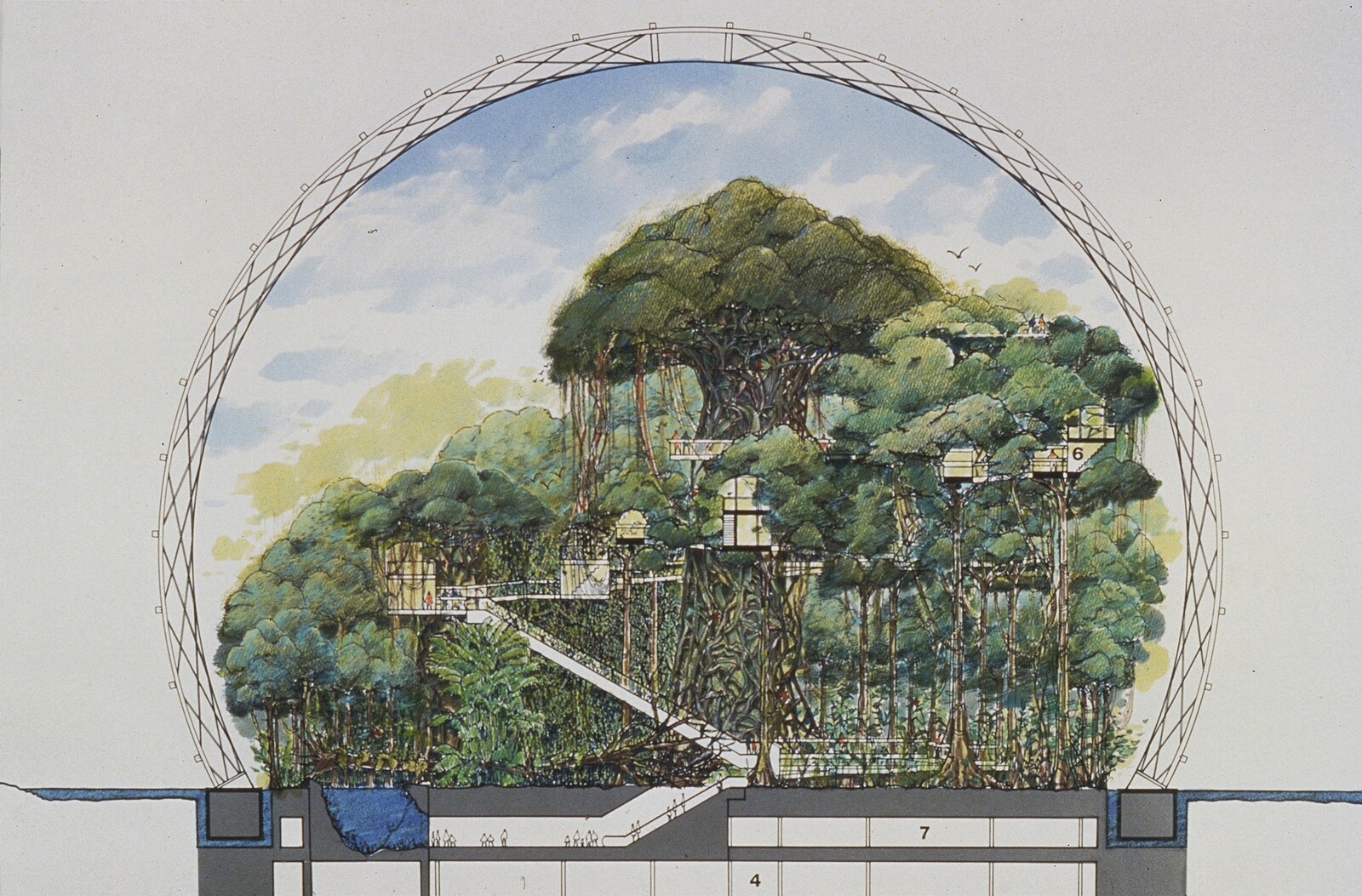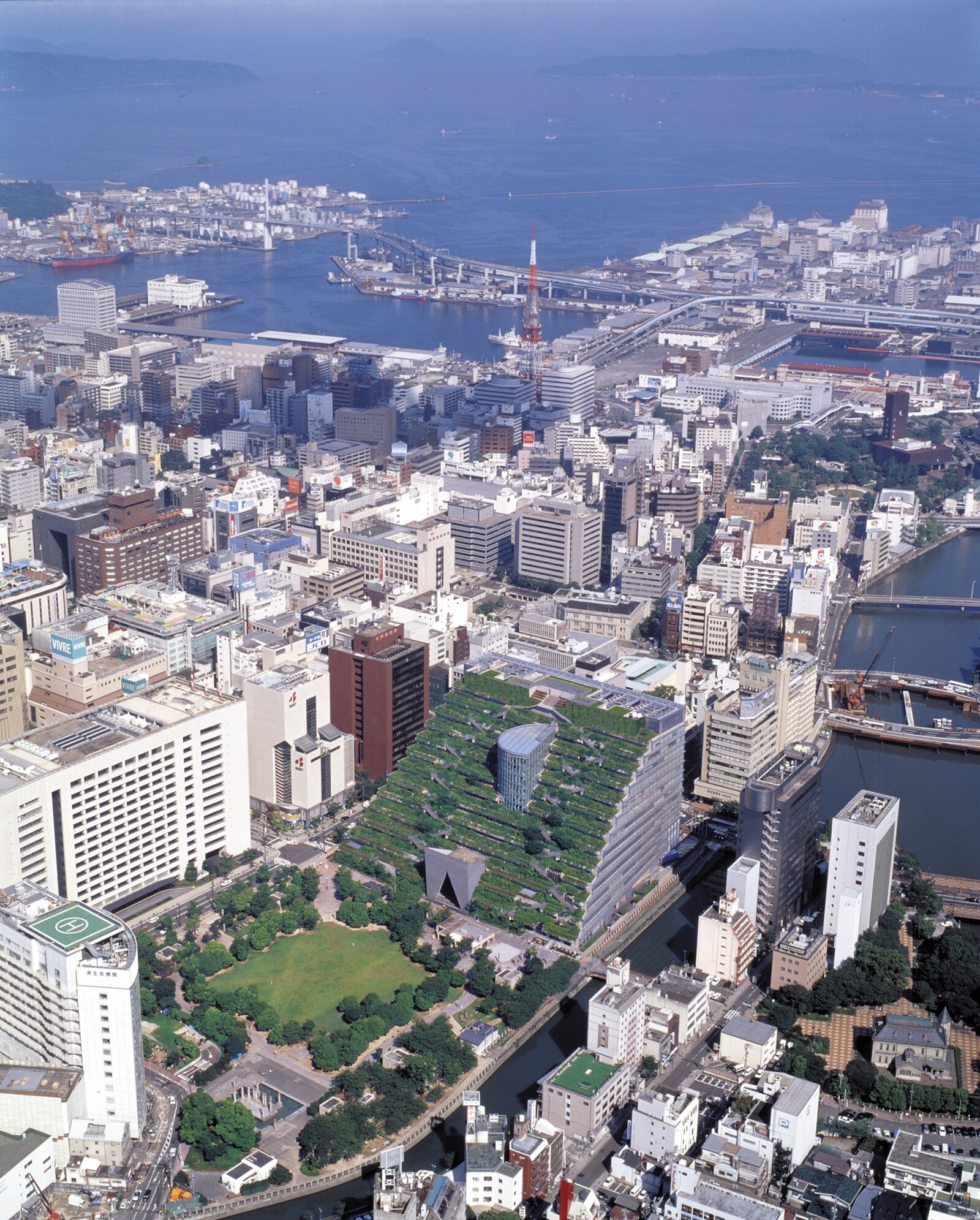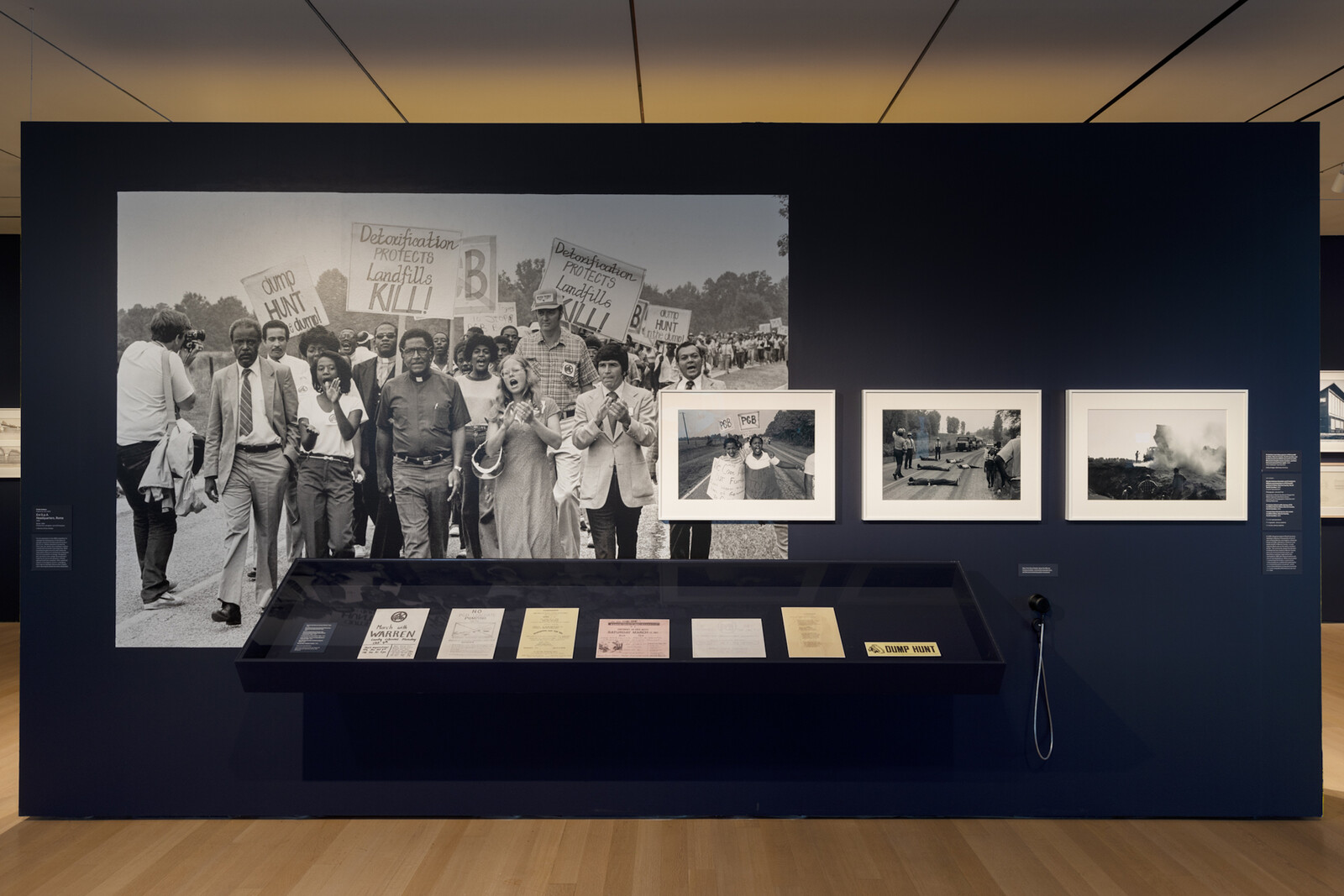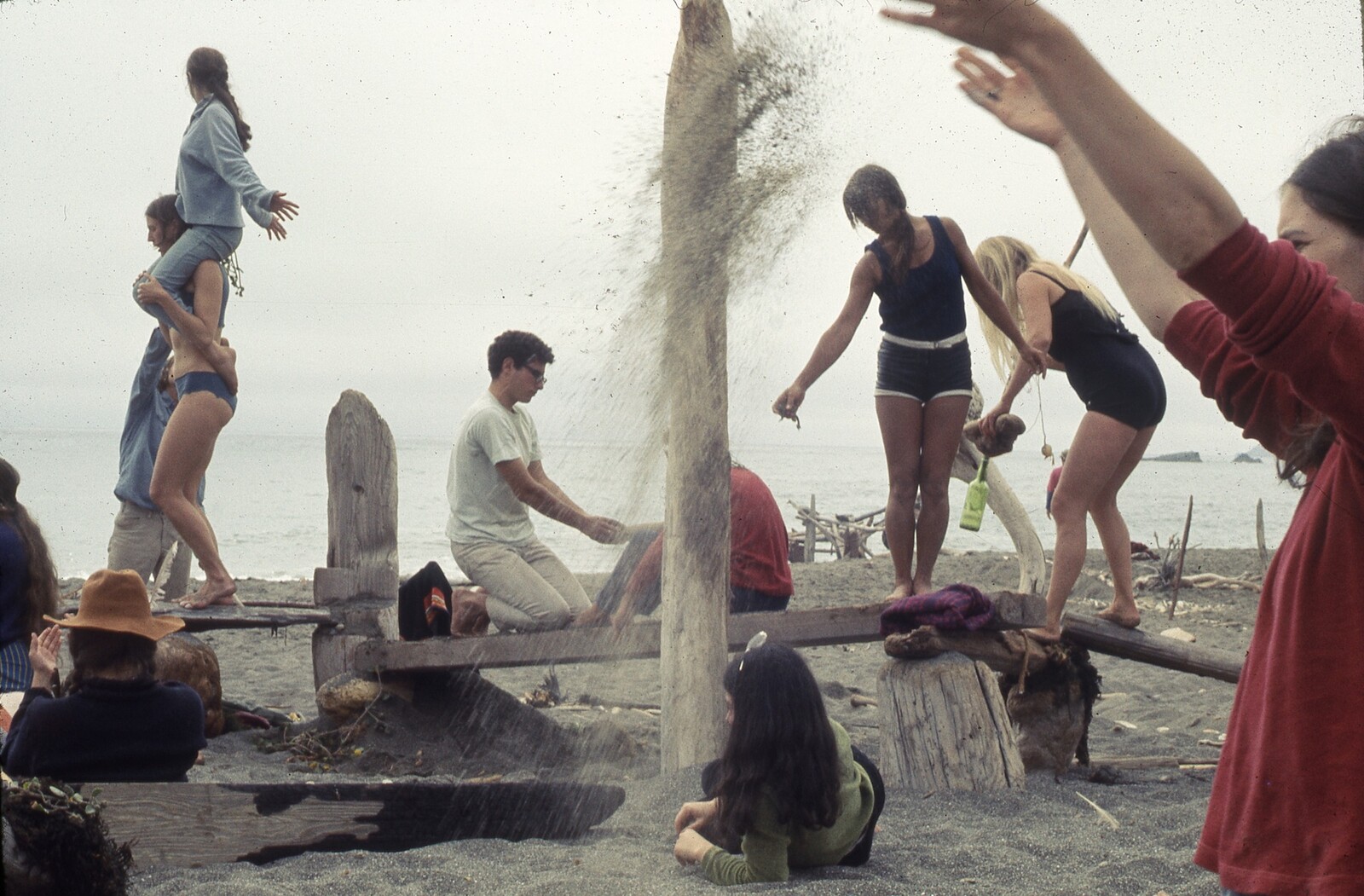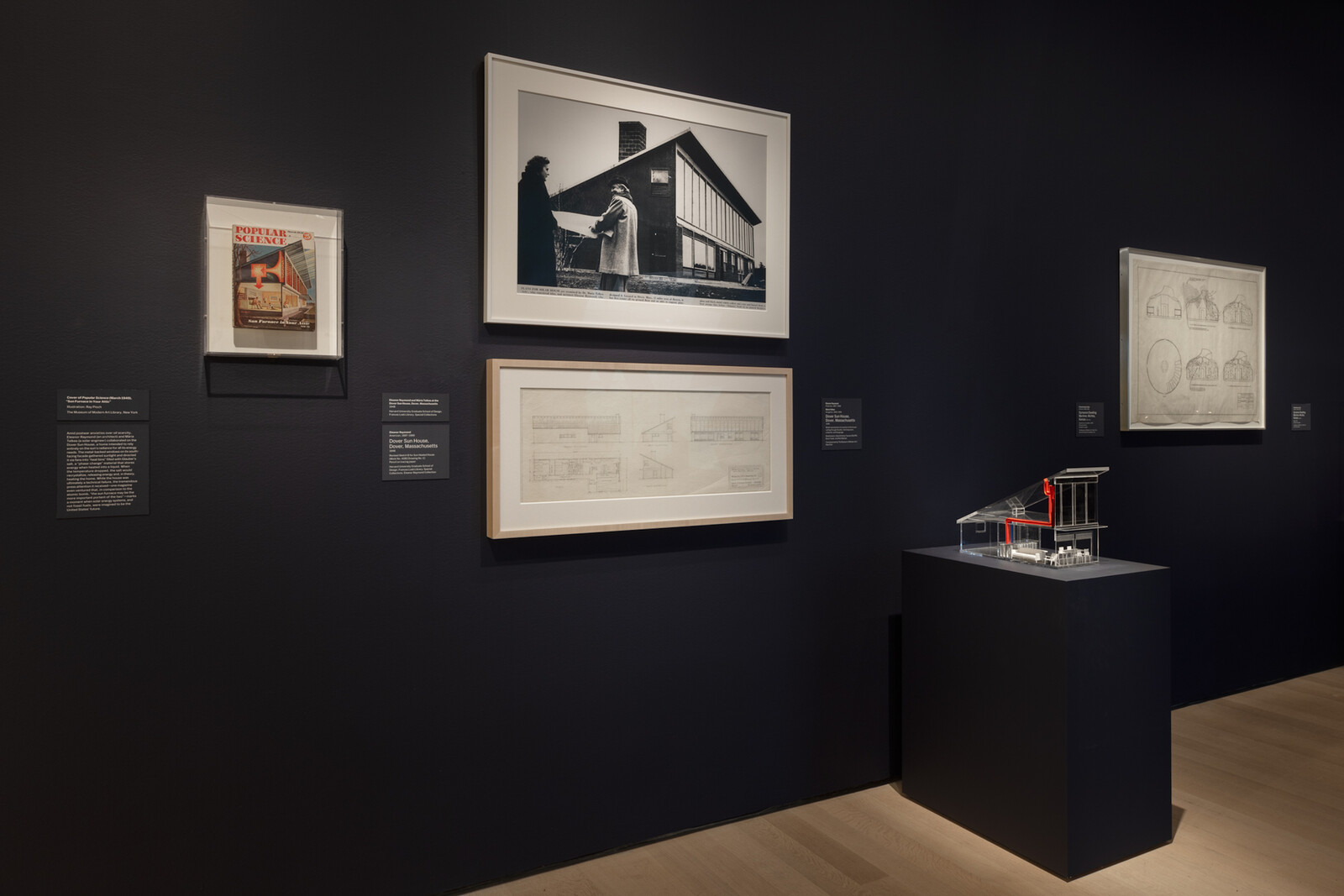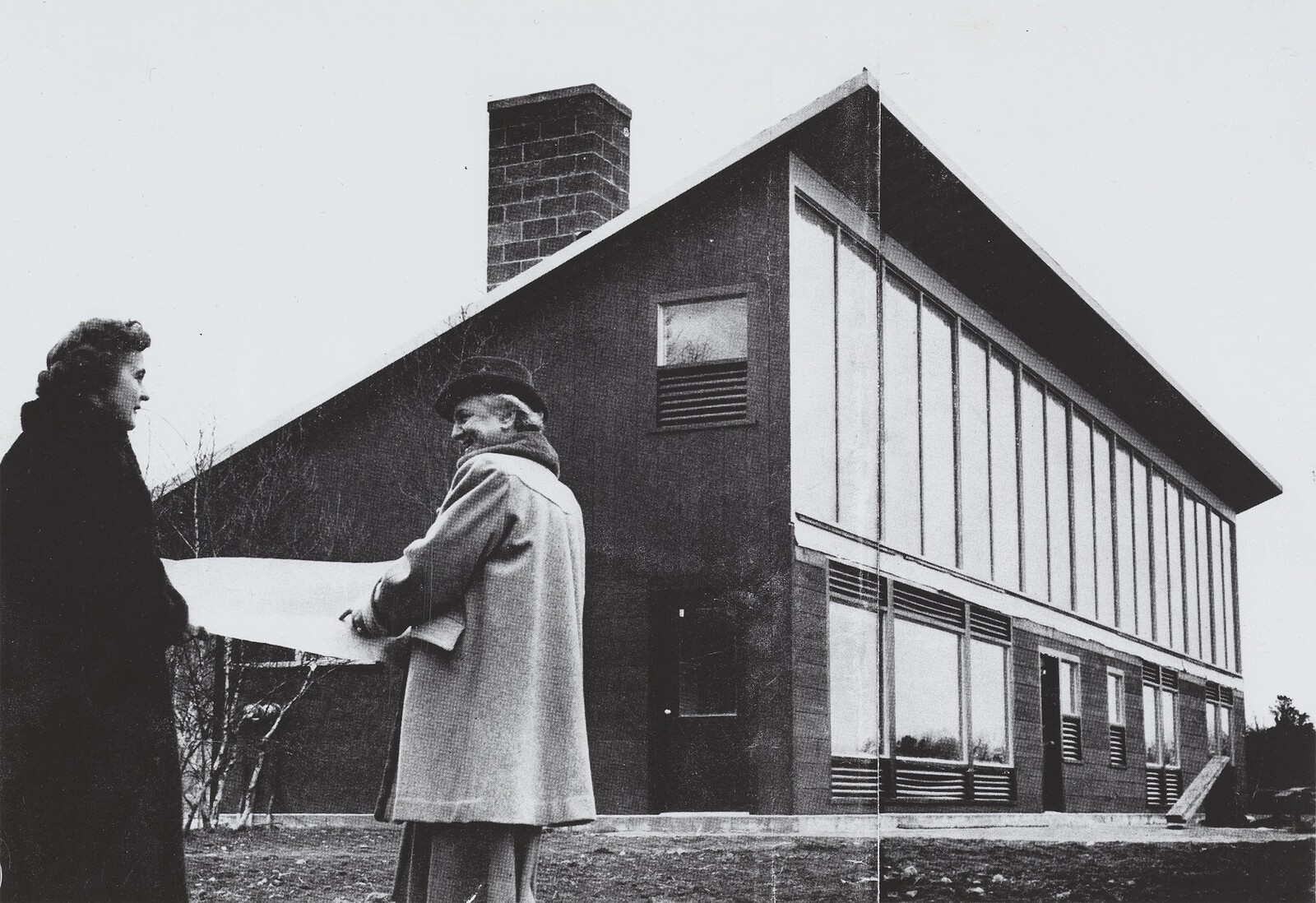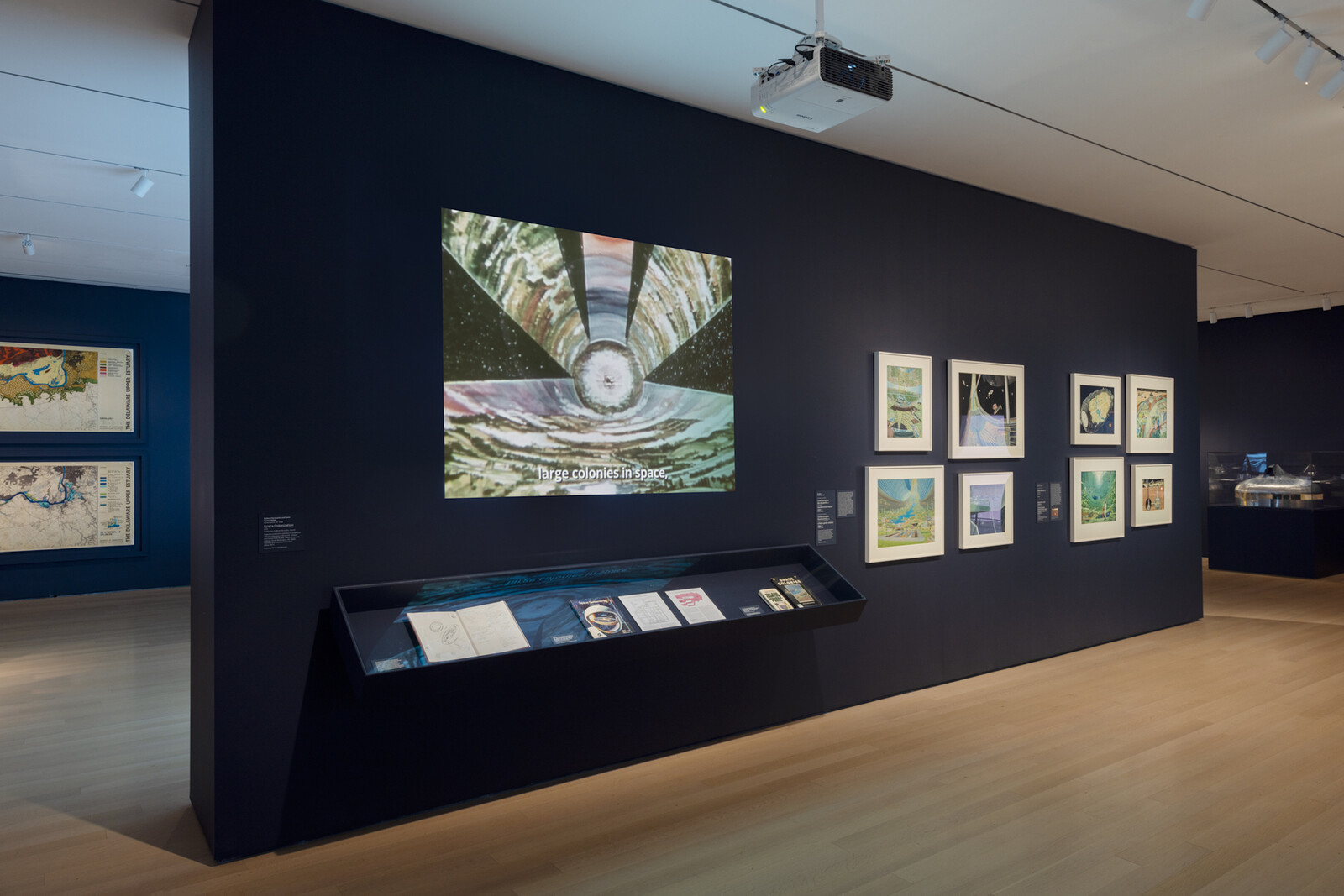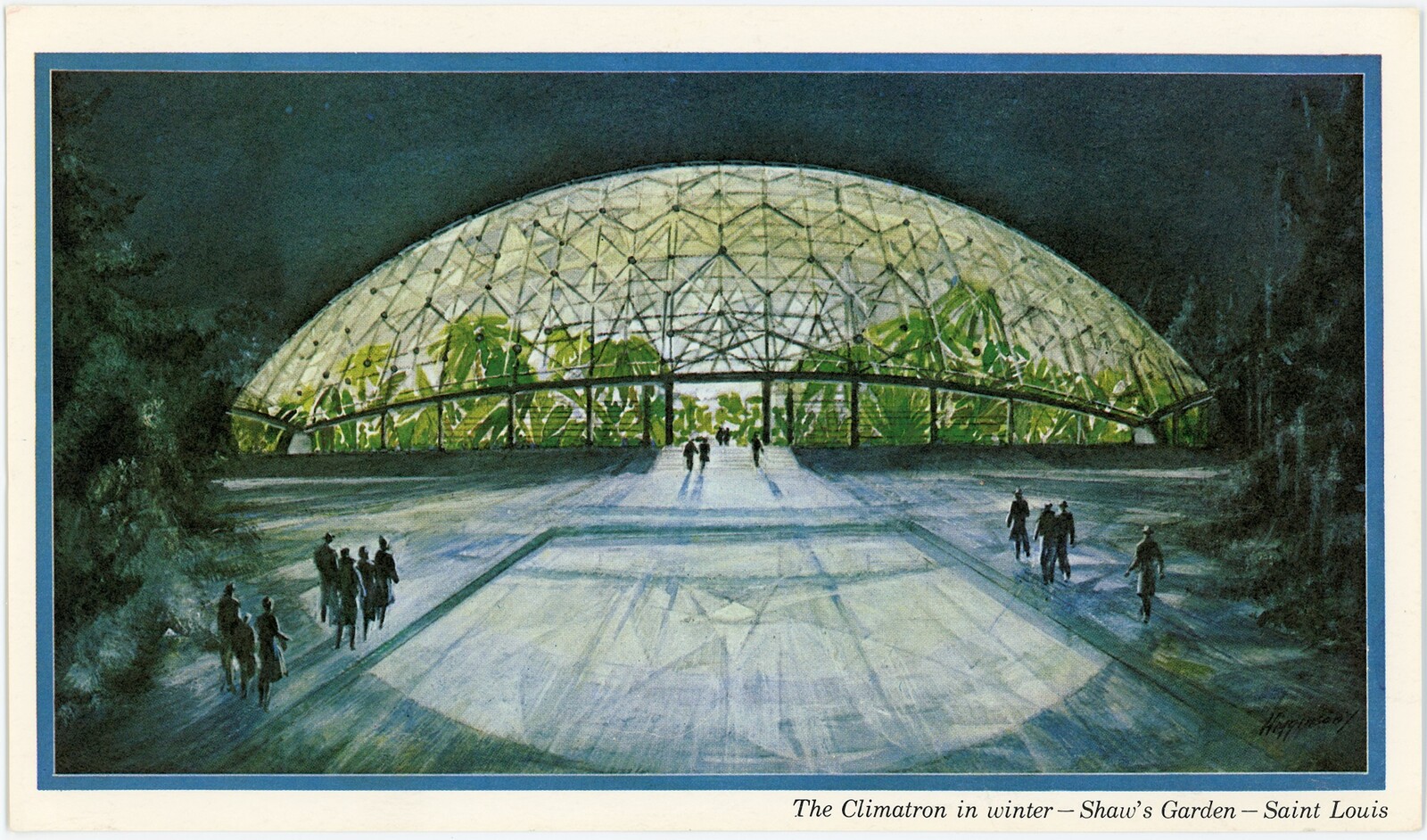In March 1949, the cover of Popular Science magazine featured Ray Pioch’s brightly colored drawing of architect Eleanor Raymond’s Dover Sun House, a Massachusetts home developed with solar engineer Maria Telkes and heated exclusively by solar energy. Part Rockwell painting, part architectural section, and part science diagram, the illustration drew on Pioch’s experience drawing instruction manuals for the U.S. Navy during World War II. It shows an idyllic family in their well-tempered living room, kept warm by the energy captured through south-facing windows and stored in canisters of mirabilite, or Glauber’s salt, a mineral well suited to storing solar heat in the day and releasing it after dark. The cover represents the best image of post-war Pax Americana, but with a twist: a bright optimism that the sun was the future source of America’s energy needs, not oil.
The cover serves as a lively introduction to “Emerging Ecologies: Architecture and the Rise of Environmentalism,” the inaugural presentation by the Emilio Ambasz Institute for the Joint Study of the Built and Natural Environment. Curated by Carson Chan, the show attempts to draw lines in the sand about what “ecology” and “the environment” mean in architecture from the 1930s to the ’90s, both parallel to and against modernism, but always highly speculative. With some 150 works on display, but only a handful of built projects, the show is as much a media presentation as it is an architecture show. From the introduction of Pioch’s Popular Science cover, to the large, colorful drawings from Ant Farm’s Dolphin Embassy business card (1976) and Ian McHarg’s ecological systems studies (1968), the exhibition imagines an alternative American future where nature is in harmony with human settlement—technologically, aesthetically, and spiritually.
Chan takes a broad brush, identifying five categories that successfully capture the ways in which we think about what constitutes “environmentalism” in architecture: Environment as Information, Environmental Enclosures, Counterculture Experiments, Multispecies Design, and Green Poetics. These five pillars help define a rough boundary around what we may consider “environmental” or “ecological” architecture, which have both had many definitions. “Emerging Ecologies” traces the twentieth century of American idealism, from crank scientists like Buckminster Fuller to later hippie fever dreams, such as Anna and Lawrence Halprin’s sixties-era nude summer workshops, in a surrealist collection of alternative US futures.
The show tracks early mainstream scientific experiments from just after World War II, including Dover Sun House. Fuller’s Dymaxion Dwelling Machine (1944–46) and famous design for a Dome over Manhattan (c. 1960) are among the earlier technocratic projects covered in the show and set the tone for the technological side of the exhibition. Among the highlights of this aspect of the exhibition are illustrations and section drawings of Cambridge Seven Associates’ 1995 unbuilt geodesic dome pavilion for Tsuruhama Rainforest Pavilion, showing lush tropical rainforest and an artificial river contained within a highly articulated structure. Perhaps the penultimate moment in this mainstream, technocratic future was the failed proposal by Eames Office and Kevin Roche John Dinkeloo and Associates for a National Fisheries Center and Aquarium (NFCA, 1966–71) in the center of Washington DC. President John F. Kennedy had championed it as a beacon of ocean science and international cooperation, but it was never built. Like most of the projects in “Emerging Ecologies,” however, it lives on in our imagination.
This is the rub of the exhibition. It is a brilliant cross-section of architectural innovations as they were developed; more importantly, they are political futures visualized through architecture. The 1960s, in particular, represented a version of America that the energy crisis and recessions of the early 1970s—not to mention the neoliberalization of the 1980s—did away with. The second (temporal) half of the exhibition shifts from collective, scientific, and civic projects like the NFCA to more disparate, countercultural activities, including protest.
Chan considers it an act of architecture, for example, that members of the Fort McDowell Indian Reservation protested and blocked construction of the Orme Dam project, saving nearby communities. In addition to the radical hippy architectures of Michael Reynolds’s Earthships or the New Alchemy Institute’s science-backed off-grid commune, the protests represent a more small-scale, decentralized architecture that ironically was more likely to be realized than the previous technocratic large-scale civic solutions. The later works in the “Green Poetics” category, such as Gaetano Pesce’s Church of Solitude (1974–77), Ambasz’s Casa de Retiro Espiritual (2004), or James Wines’s Forest Building (1978–80) for Best Products, represent important ideas about how to design with nature on a cultural and spiritual level. Yet they are mostly symbolic—almost ghostly—in comparison with the earlier, more ambitious works in the show.
This is not a coincidence. As this exhibition makes clear, saving the environment—or building architecture in harmony with it—is no longer a technological problem so much as a political one. Reflecting this, “Emerging Ecologies” is as much about science fiction and worldbuilding as it is about real solutions in landscaping or environmental data systems. It includes works such as Don Davis’s NASA paintings of life in space colonies, or the 1972 movie Silent Running, which uses the St. Louis Climatron as a setting for a futuristic eco-foible that predicted the social collapse of test subjects living in Biosphere 2 two decades later.
All of these dreams and failures pose a host of questions. “Emerging Ecologies” has succeeded in mapping a group of architectural projects, the influence of which has only grown since they—and their attendant media representations—were initiated. While many large institutional shows of late have felt organized around babbling word salads lamenting how awful the world is, Chan has deftly organized a mostly optimistic group of psychedelic eco-futures, at least when taken as a group of proposals. There are political critiques, but they are subtle and embedded, not didactic. However, even with the benefit of hindsight, the real-world, tangible successes of the futuristic architectural experiments in “Emerging Ecologies” are not as clear.
What does the show tell us about our future? The tension between the vibrant ideas on show, and the world’s current stark realities, are palpable. While “Emerging Ecologies” is not an escapist fantasy, the connection of these radical ideas and their relevance to the present is harder to identify—at least beyond their potential to inspire current practitioners. Is it still possible to even dream of the future like this? Are these projects retrofuturism or a blueprint? Either way, the exhibition is an important snapshot of the environmental history that our future depends on—even if that future is not as pretty a picture as those currently found on MoMA’s third floor galleries.
